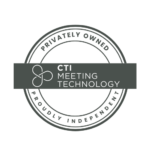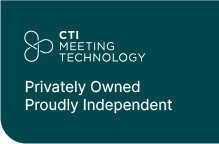Humans are social creatures. Throughout our lives, we are constantly meeting and engaging with people. At school, university, work, playing sports… Situations like the COVID-19 pandemic highlighted how we all crave meaningful human connections. In a professional environment, it is through networking that we meet new people, exchange ideas, and create valuable connections.
Traditionally, onsite conferences were the perfect opportunity for like-minded people to gather in the same place and connect. However, with the shift to virtual and hybrid conferences, networking dynamics have changed significantly. The need to include remote attendees has encouraged the appearance of new networking tools to enhance the event experience. Let’s explore effective networking techniques that enable you to make meaningful connections and maximize the conference experience in a virtual setting:
Pre-Conference Networking Preparation
There are several ways to start building connections even before the conference begins. Use virtual platform features such as biographies and pictures to allow participants to introduce themselves virtually. If they allow it, their profiles can be shared with other peers, linking to their social media channels where they can establish a conversation.
We have talked about the power of social media before and how simply using an event-specific hashtag on platforms like Twitter or Instagram can enable your attendees to find other participants and connect with them. Organizers can also create private groups related to their event on professional platforms such as LinkedIn.
This will create a sense of exclusivity for attendees and allow organizers to share important information related to the conference. Ask questions and interact with the participants to engage with them before the event. In addition, this is also a great way to pinpoint hot topics and generate buzz around the conference.
Structured Virtual Networking Sessions
Have you ever heard of speed dating? Two people are matched with each other to have a conversation for a short time. Organizers can apply this concept to virtual conferences to facilitate interactions. Match remote participants randomly and allow them to briefly connect before moving on to the next person.
Small group discussions are also possible. Choose a specific topic and place your attendees in separate breakout rooms to facilitate a more focused conversation. No matter your approach, the goal is to connect attendees and promote meaningful interactions.
Some virtual conference platforms might even offer matchmaking tools, perfect for scheduling one-on-one meetings with potential collaborators or mentors. This is a powerful feature if multiple students are attending the event. In short, event technology is the best assistant to help attendees break the ice and facilitate discussions.
Explore our event solutions for scientific conferences.
Leveraging Chat and Messaging Features
Virtual chat rooms can foster participation during sessions. Chat rooms can greatly enhance networking opportunities, allowing attendees to ask questions and share insights with the rest of the participants. Hey, you might even spot a topic of interest that can be covered in a future event!
If the virtual platform (and attendee preferences) allow it, organizers can leverage the messaging features within the software to encourage more personal and direct interactions among participants. These features can be used to connect with like-minded peers, exchange contact information, and arrange virtual meetings.
Online Communication Features
Gone are the days of paper business cards: virtual conferences require a digital approach. Create and share virtual bios that include contact information and social profiles, enabling your participants to seamlessly exchange personal information.
Data protection is a concern when we operate in a virtual environment. Organizers must implement the proper security measures to ensure information is only shared with those attending the conference. Additionally, presenters and attendees should be able to decide which information they want to share, with whom, and the chance to delete data if desired.
All in all, when used correctly and with the required security measures, virtual platforms offer participants the opportunity to expand their network by connecting with other experts in their industry. Use a GDPR-compliant software provider to protect your participants’ data.
Interactive Workshops and Roundtables
One advantage of virtual conferences is the opportunity to gather worldwide experts without needing transportation. It would be a shame not to take advantage of their presence and knowledge. Include interactive workshops and roundtables during the conference to foster networking in a collaborative setting.
During these discussions, attendees can offer expertise and share their insights and experiences. Naturally, a researcher from Brazil won’t have the same background and experiences as a student from Belgium. This is an excellent opportunity for people with diverse backgrounds to connect and learn from each other.
Additionally, organizers can choose a moderator to break the ice and ensure all group members participate equally. Remember, the main objective of these workshops is to foster connections among attendees while gaining valuable knowledge.
Networking In a Virtual Environment
Of course, most of the networking in onsite conferences happens during breaks. Coffee time or happy hours provide a relaxed environment for having laid-back conversations. These casual sessions allow participants to unwind, share experiences, and exchange ideas in a more informal setting.
While this is not possible in a virtual setting (and most of your attendees will be using breaks to stretch or do other things), organizers can still offer a space in the virtual platform that attendees can access between sessions. Here, participants can talk about off-topic themes and form personal connections.
Post-Conference Follow-Up Strategies
Remember that hashtag you used to promote your event? Or the private LinkedIn group you created to share updates with attendees? These spaces don’t have to disappear once the conference is over!
Organizers can leverage social media to share highlights from the event, thank speakers for their contributions, and promote upcoming conferences. Creating meaningful connections with attendees is crucial for them to come back and refer the event to other colleagues.
Discover how to take advantage of social media platforms for scientific events here.
New & Upcoming Virtual Networking Tools
Event technology changes fast. With the exponential growth of AI-powered tools, it’s hard to imagine which software organizers will use in the future for networking. No need to panic! AI can help achieve a more satisfying and seamless networking experience.
Stay informed about the latest virtual trends and tools to maximize the potential of the virtual platform used. If you embrace these tools, You can create an effective and efficient virtual networking strategy.
Overcoming Virtual Networking Challenges
Unfortunately, virtual networking also comes with a fair share of challenges. You might experience potential communication issues due to language barriers or attendees’ disabilities. Be mindful as well of potential delays or technical problems that can happen during these conversations.
Most of these issues can be solved with the right technology. Emerging AI tools should foster inclusivity, allowing participants with limitations to enjoy these sessions as their peers. It’s a long way to go, we know! But the reward of having satisfied attendees is priceless!
To Wrap Up…
Hopefully, you find yourself much more confident in navigating the virtual networking landscape after reading this article. Remember to prepare ahead of time and utilize the right virtual tools. If you’re new to the virtual conference format, no worries! You can find our guide on planning successful virtual meetings here.
Are you ready to apply these tips to your next conference?





